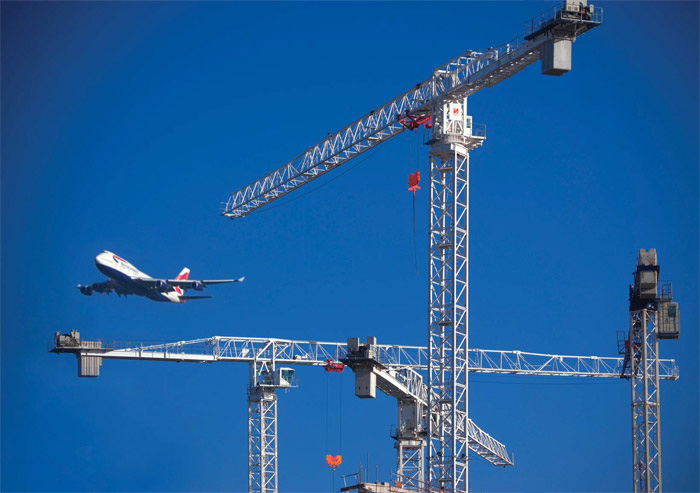
Flat-top tower cranes are seeing increased popularity among construction projects worldwide. An in-depth article in Cranes Today Magazine explains the reasons for this upswing.
How do flat-tops differ from other tower cranes?
The main difference is that flat-tops, also called topless cranes, do not have an A-frame or cat-head structure above the tower, as well as pendant lines that connect the top of the A-frame to the jib and counterjib. The absence of these items makes transporting, assembly and erection easier and quicker. Additionally, when a construction project requires multiple cranes, the jib of one crane requires less height clearance to pass under the jib of its neighbor.
Traditional hammerhead tower cranes utilize the A-frame structure for additional strength in lifting cargo. With no A-frame present, flat-top cranes lift comparatively less. In recent times, however, flat-tops with lifting capacities of 32 to 50 tons have entered the market. Conventional flat-tops typically lift 8 to 10 tons, so newer models with higher capacities have become a welcome response to market demands.
Manufacturers of increased capacity flat-top tower cranes include Potain, Terex, Liebherr and Comansa, plus Italian maker ENG and Chinese manufacturer Yongmao. Liebherr offers a supersized flat-top with 100- and 125-ton lifting capacities.
Structural simplicity is another difference between flat-top and hammerhead tower cranes. Flat-tops have no pendant lines and the jibs are each a single regime. The lower member of the jib is always in compression and its upper member is always in tension, so their behavior under load is easier to predict. On the other hand, hammerhead cranes have different stress regimes with alternating areas of compression and tension. The pendant lines keep these areas in check, but metal fatigue is still a risk.
Where are they used?
Work sites where flat-top cranes are used include airports, nuclear power plants, residential buildings, shipyards, wind farms and infrastructure. Flat-tops are ideal for construction projects near or at airports so that clearance below flight paths is more easily adhered to.
Urban development plans include ceiling restrictions for both the permanent and temporary structures. This may include restrictions due to FAA requirements for nearby airports or emergency helicopter access near hospitals. The flat-top style tower cranes with increasing capacity allow developers to design their buildings closer to those development ceiling restrictions by reducing the airspace required overhead for the crane.
Read “Flat-Tops Power Up” at Cranes Today by clicking here. Image above courtesy of Cranes Today.